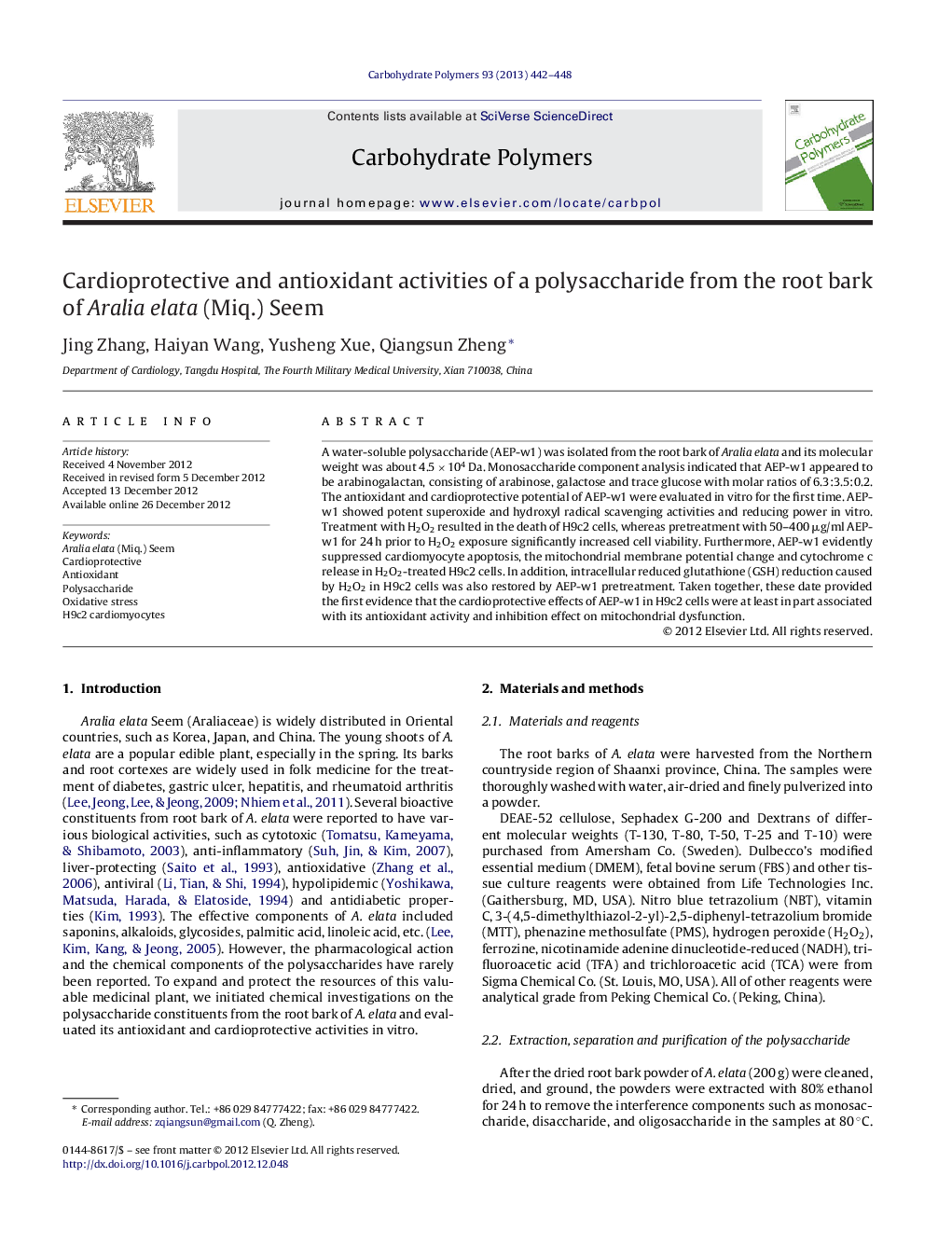| Article ID | Journal | Published Year | Pages | File Type |
|---|---|---|---|---|
| 1384348 | Carbohydrate Polymers | 2013 | 7 Pages |
A water-soluble polysaccharide (AEP-w1) was isolated from the root bark of Aralia elata and its molecular weight was about 4.5 × 104 Da. Monosaccharide component analysis indicated that AEP-w1 appeared to be arabinogalactan, consisting of arabinose, galactose and trace glucose with molar ratios of 6.3:3.5:0.2. The antioxidant and cardioprotective potential of AEP-w1 were evaluated in vitro for the first time. AEP-w1 showed potent superoxide and hydroxyl radical scavenging activities and reducing power in vitro. Treatment with H2O2 resulted in the death of H9c2 cells, whereas pretreatment with 50–400 μg/ml AEP-w1 for 24 h prior to H2O2 exposure significantly increased cell viability. Furthermore, AEP-w1 evidently suppressed cardiomyocyte apoptosis, the mitochondrial membrane potential change and cytochrome c release in H2O2-treated H9c2 cells. In addition, intracellular reduced glutathione (GSH) reduction caused by H2O2 in H9c2 cells was also restored by AEP-w1 pretreatment. Taken together, these date provided the first evidence that the cardioprotective effects of AEP-w1 in H9c2 cells were at least in part associated with its antioxidant activity and inhibition effect on mitochondrial dysfunction.
► A polysaccharide AEP-w1 was isolated from the root bark of Aralia elata. ► The antioxidant and cardioprotective potential of AEP-w1 were evaluated in vitro. ► AEP-w1 showed potent free radical scavenging activity and reducing power. ► AEP-w1 pretreatment protected H9c2 cells from H2O2-induced injury. ► AEP-w1 pretreatment exhibited inhibition effect on mitochondrial dysfunction.
